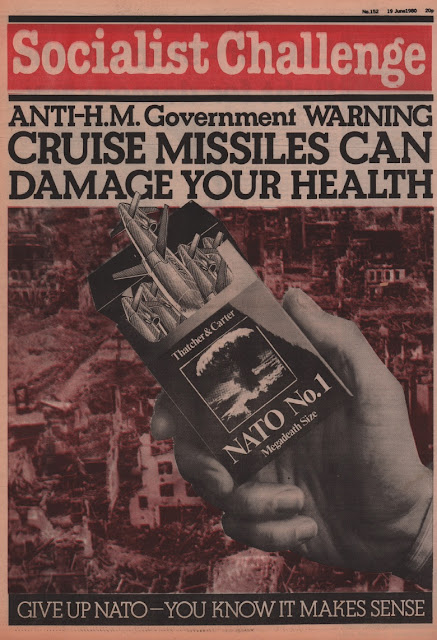 |
| Peter Kennard's design for the flyer/poster |
The announcement of the deployment of a new generation of US nuclear weapons in Europe, coupled with increasing tension between NATO and the Soviet Union, led to a mass peace movement across the West in the early 1980s. In England the first major demonstration against these cruise missiles was called by the Labour Party on June 22 1980, during a brief period when the leadership of the Party were voicing opposition to nuclear weapons.
Around 25,000 people marched in the pouring rain from London's South Bank to Hyde Park. Speakers included veteran peace campaigner Fenner Brockway, soon to be Labour leader Michael Foot and the actor Susannah York who told the crowd, 'I refused to accept that 25,000 people here today are one fortieth of a megadeath. I am not a millionth of a megadeath. We are ourselves'.
The image of the megadeath and mass nuclear destruction haunted the nightmares of young people like myself getting involved in this new peace movement and recurs across popular culture in this period. In its report of the demo, Socialist Challenge noted that 'One of the most striking features of the demonstration was the high proportion of young people who turned out. Groups of friends carried home-made placards calling for an end to war: "Fall in against fallout", "Education not Missiles", "Wage War on Weapons", "Germ Warfare means Nightmare".
 |
| Socialist Challenge, 12 June 1980 |
 |
| Socialist Challenge front page for the demo - demanding 'Give up NATO', which was not the position of the Labour Party organisers |








